Many of the world’s most beloved vehicles didn’t roll off the assembly line as instant classics. In fact, some of them teetered on the edge of failure before a dramatic mid-production pivot transformed their fate. Whether prompted by shifting market demands, unforeseen engineering setbacks, or a sudden spark of creative genius, these changes proved pivotal.
What began as uncertain projects became automotive legends, redefining standards and capturing imaginations. This article explores 20 vehicles that took a bold new direction mid-production—and emerged far stronger for it. Their stories prove that sometimes, a twist in the road leads straight to greatness.
I admit I have loved the Pontiac Trans Am ever since I first saw the film “Smokey and the Bandit” as a kid. That black Trans Am with Burt Reynolds behind the wheel and Sally Field in the passenger seat became a car I always wanted. Sadly, for a number of reasons, I have not owned one – but have driven many.
Despite my love affair with the later-generation Trans Am in my younger years, my all-time favorite Trans Am (and one of my all-time favorite pony cars – even more than the 1960s Camaro Z28) is the first-generation Trans Am.
Featured on AutoHunter is this 1969 Pontiac Trans Am. The car is being offered by a dealer in Mankato, Minnesota, and the auction will end Tuesday, July 22, 2025, at 11:30 a.m. (PDT).
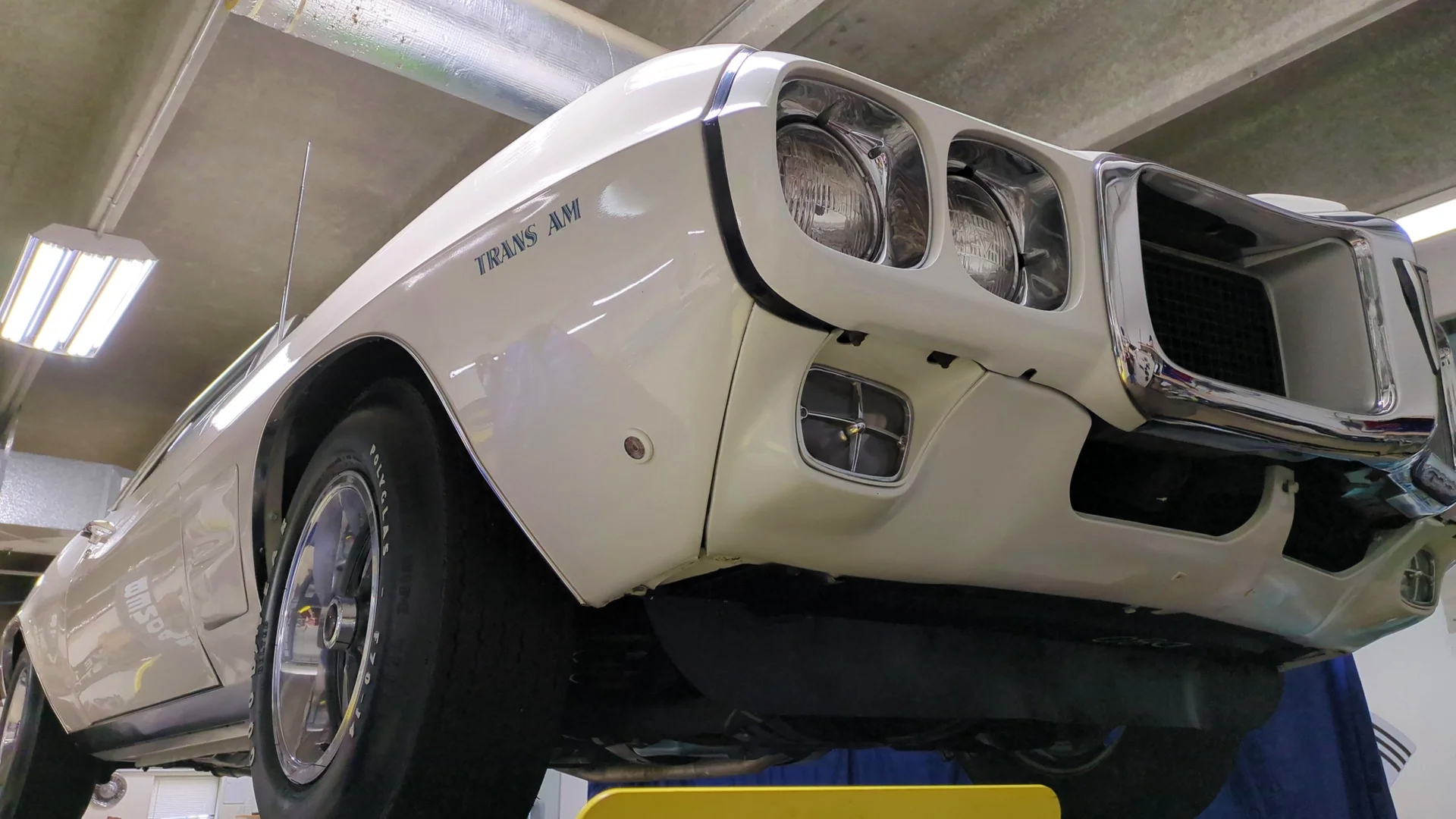
That first model had a purity of design and, while still a bit outrageous, also incorporated performance body options more subtly, with only a small Trans Am logo on the front fenders instead of the big bird covering the entire hood. It also offered great engine combinations and enough vents, spoilers and scoops to really look like a 1960s race car for the street. An interesting footnote about the 1969 Trans Am is that, despite its name, it never competed in the Trans Am racing series for which it was named. In fact, using the name also caused some issues for GM, because “Trans Am”‘ was used without permission from the SCCA, the sanctioning body and creators of the Trans Am series. They threatened to sue GM, but the automaker settled the issue by agreeing to pay $5 to the SCCA for each Trans Am it sold.
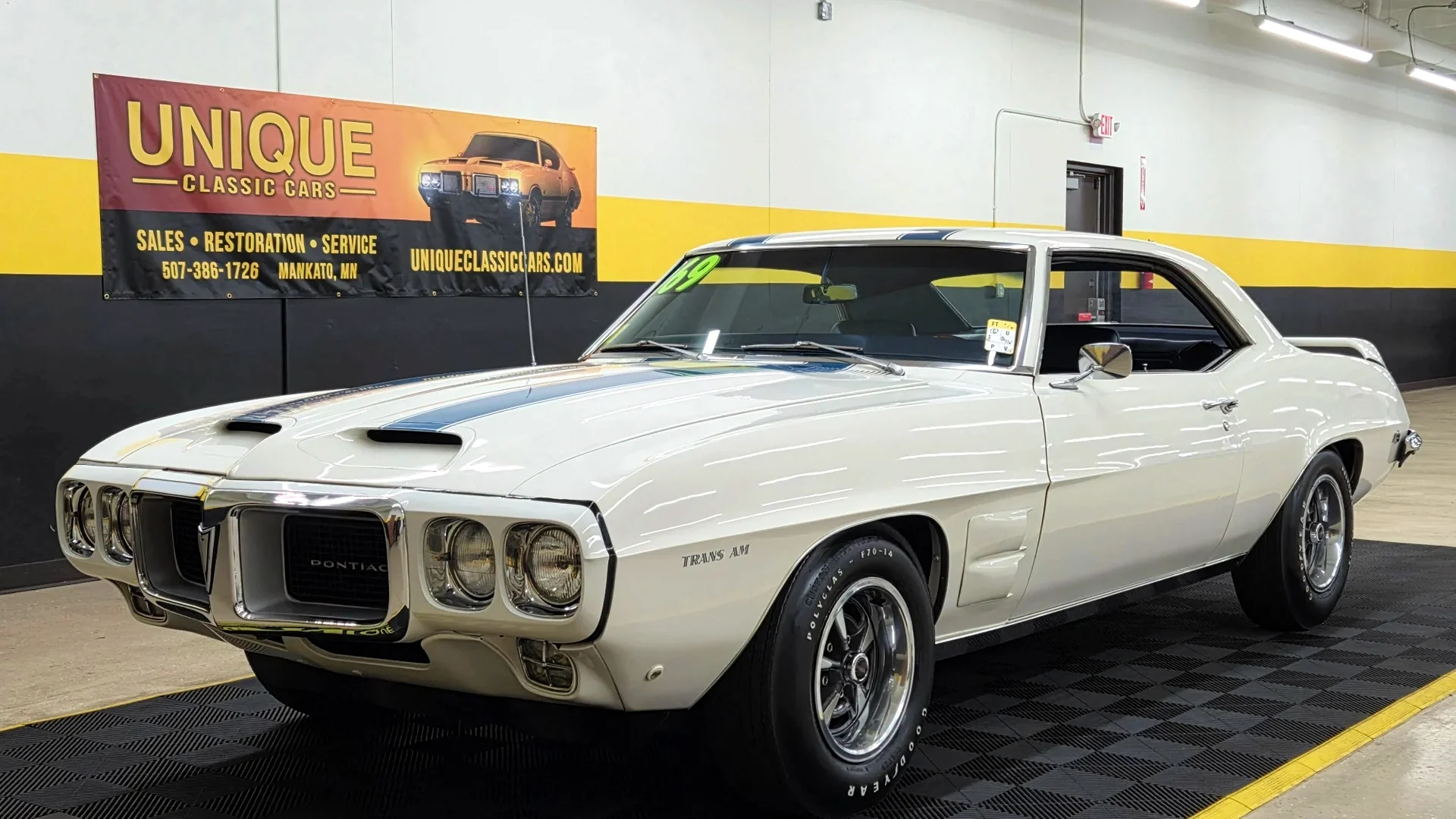
The seller describes this 1969 Trans Am as being powered by its original numbers-matching L74 400 HO Ram Air V8 mated to the original three-speed Turbo Hydra-Matic 400 automatic transmission. Finished in Cameo White with blue racing stripes over a Dark Blue vinyl interior, this pony car is offered by the selling dealer with PHS documentation, factory service manuals, an options list from GM and a clear title.
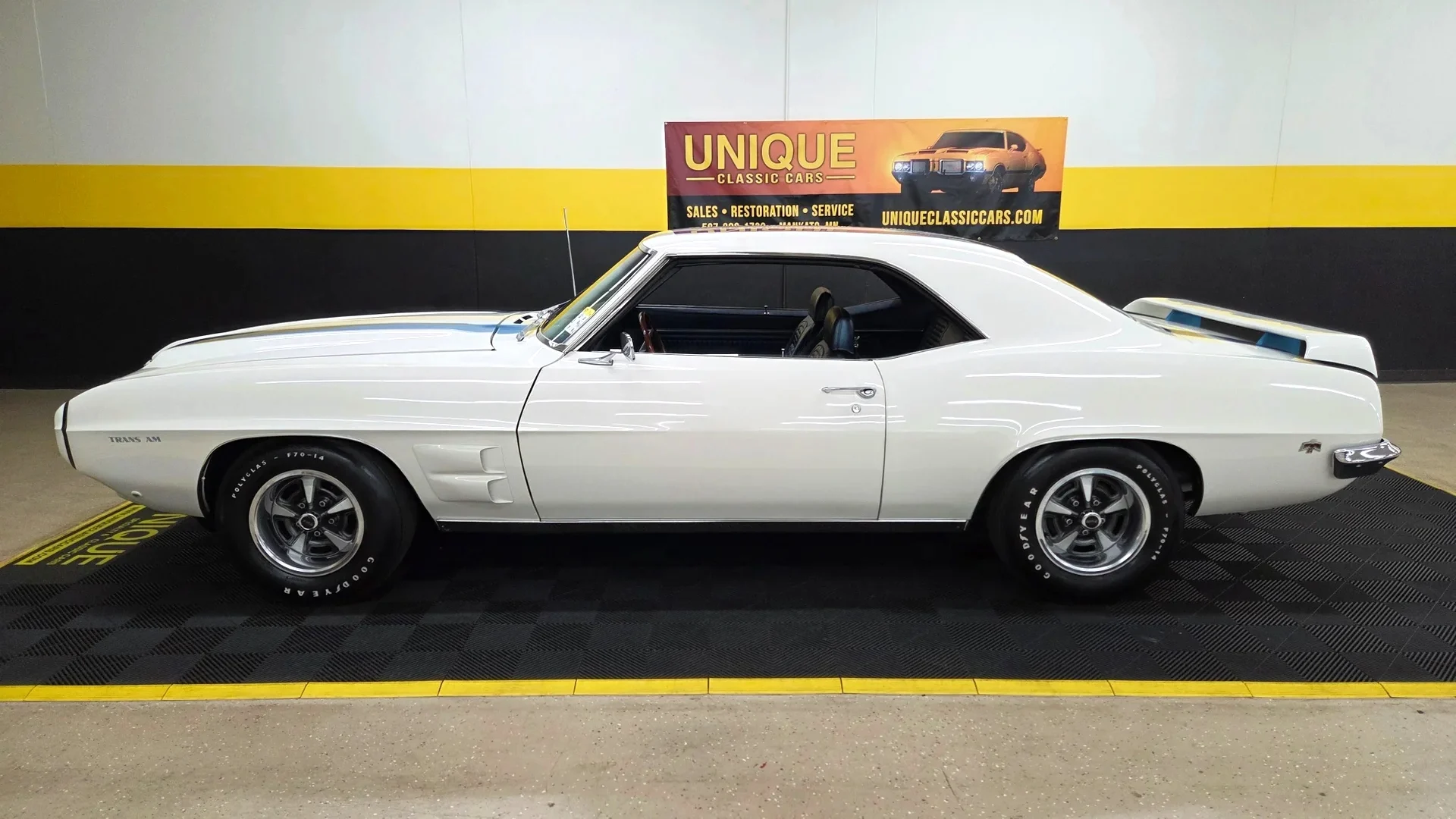
This, like any 1969 Trans Am, is a rare car, being only one of only 689 Trans Am coupes built and one of only 114 Firebird Trans Ams built with an L74 400ci engine and Turbo Hydra-Matic transmission.
The exterior looks to be in excellent condition, including the Cameo White paint. The seller does note there are some minor touch-ups from chips, but that’s it. It of course features its factory blue stripes, rear spoiler, Ram Air hood and side vents. The car rides on correct 14-inch Rally II wheels with correct F70 Goodyear Polyglas raised-white-letter bias-ply tires.
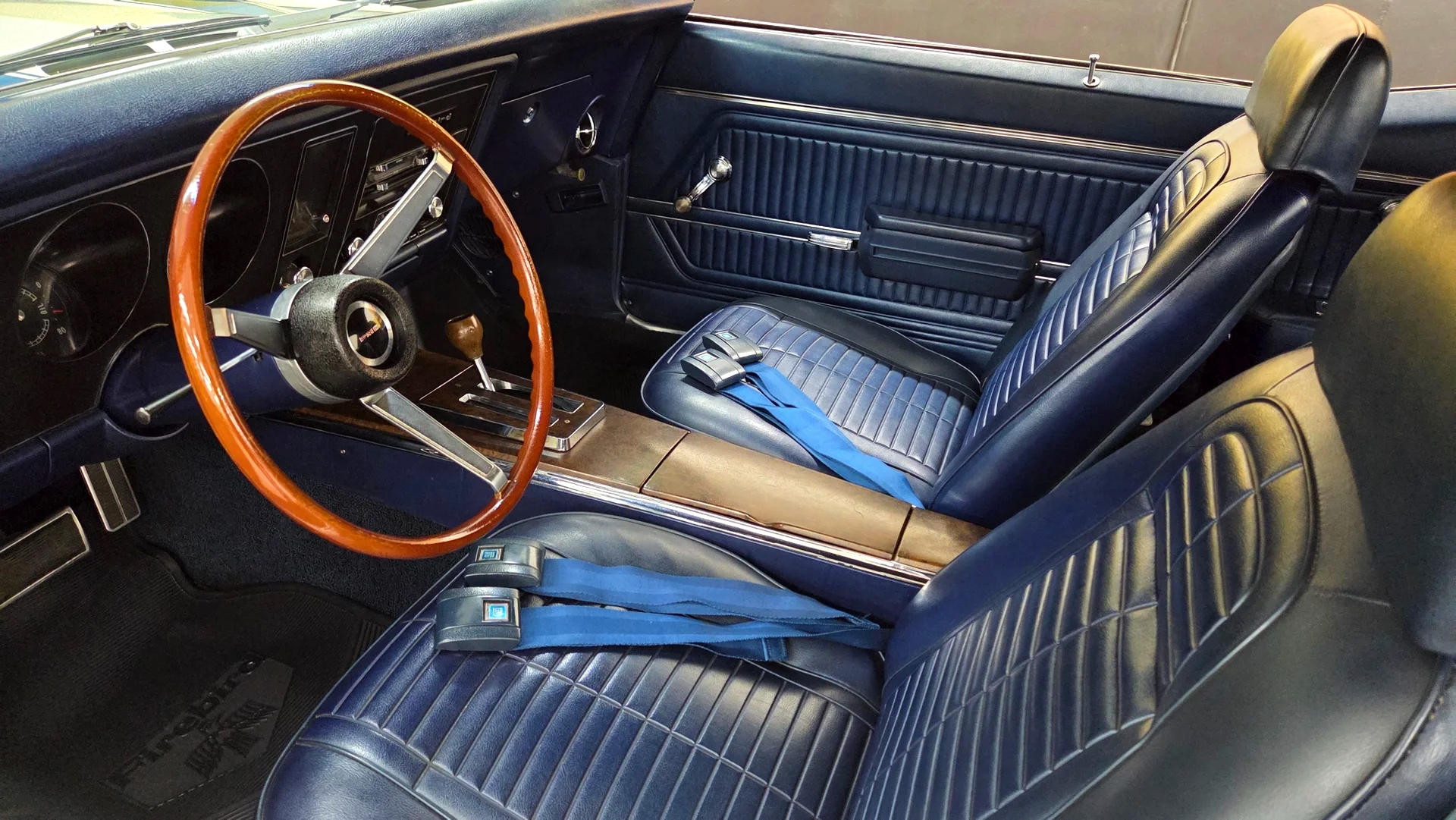
The Dark Blue vinyl upholstery also appears to be in excellent shape, apart from some minor scuffs on the driver’s seat. The car is super-correct and features burl vinyl applique, a center console with an automatic shifter and the correct wood steering wheel.
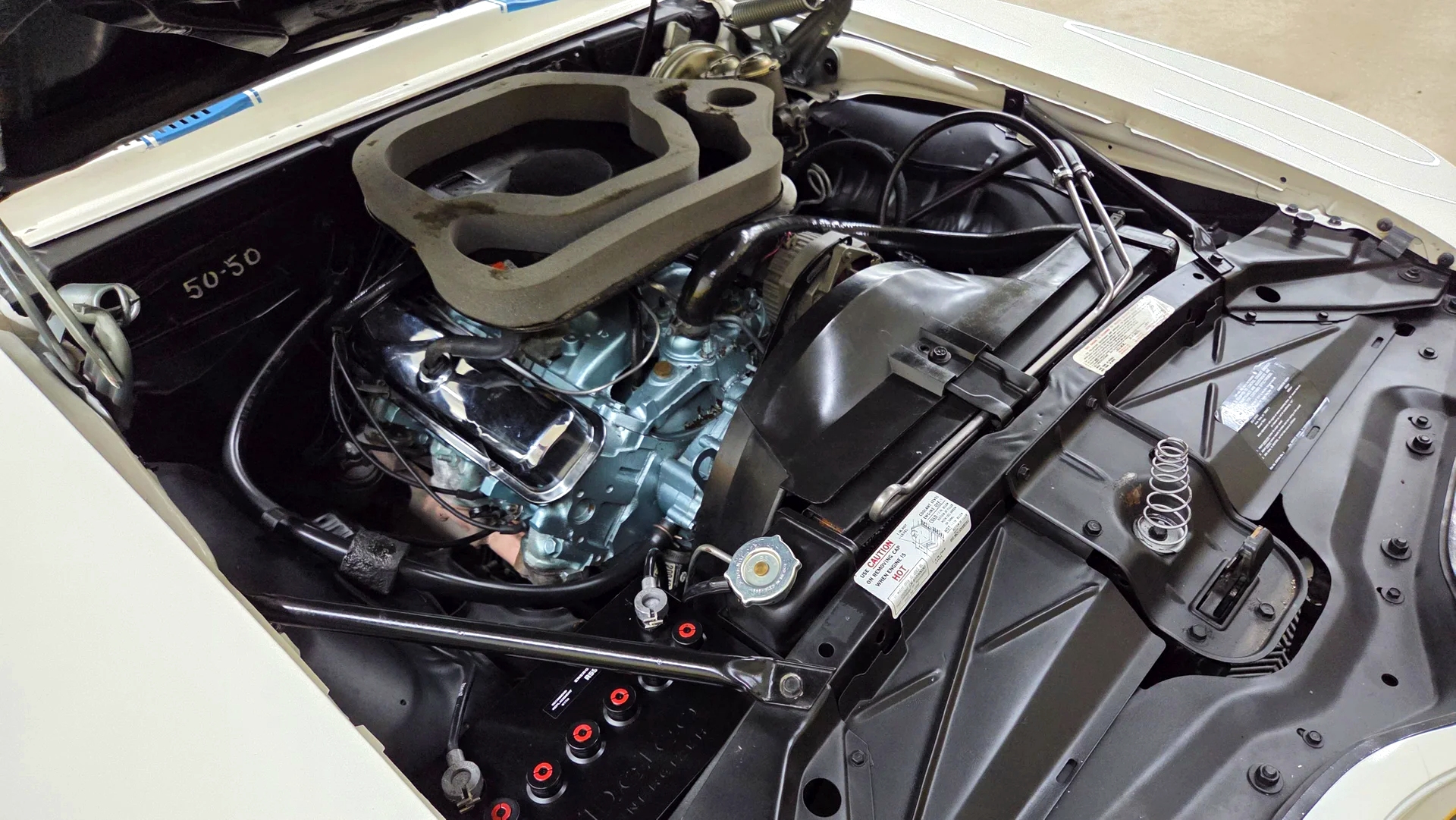
Under the hood lies the magic 400 HO Ram Air V8. I say “magic” because these Pontiac 400s are a sweetheart of an engine, with this one rated at 335 horsepower and 430 lb-ft of torque. Everything under the hood not only looks clean but also is correct. In essence, this is a show car you can drive. The seller does note there is a slight fluid leak from the power steering pump; an easy fix and something I would attend to, as this is a nice car and worth the work.
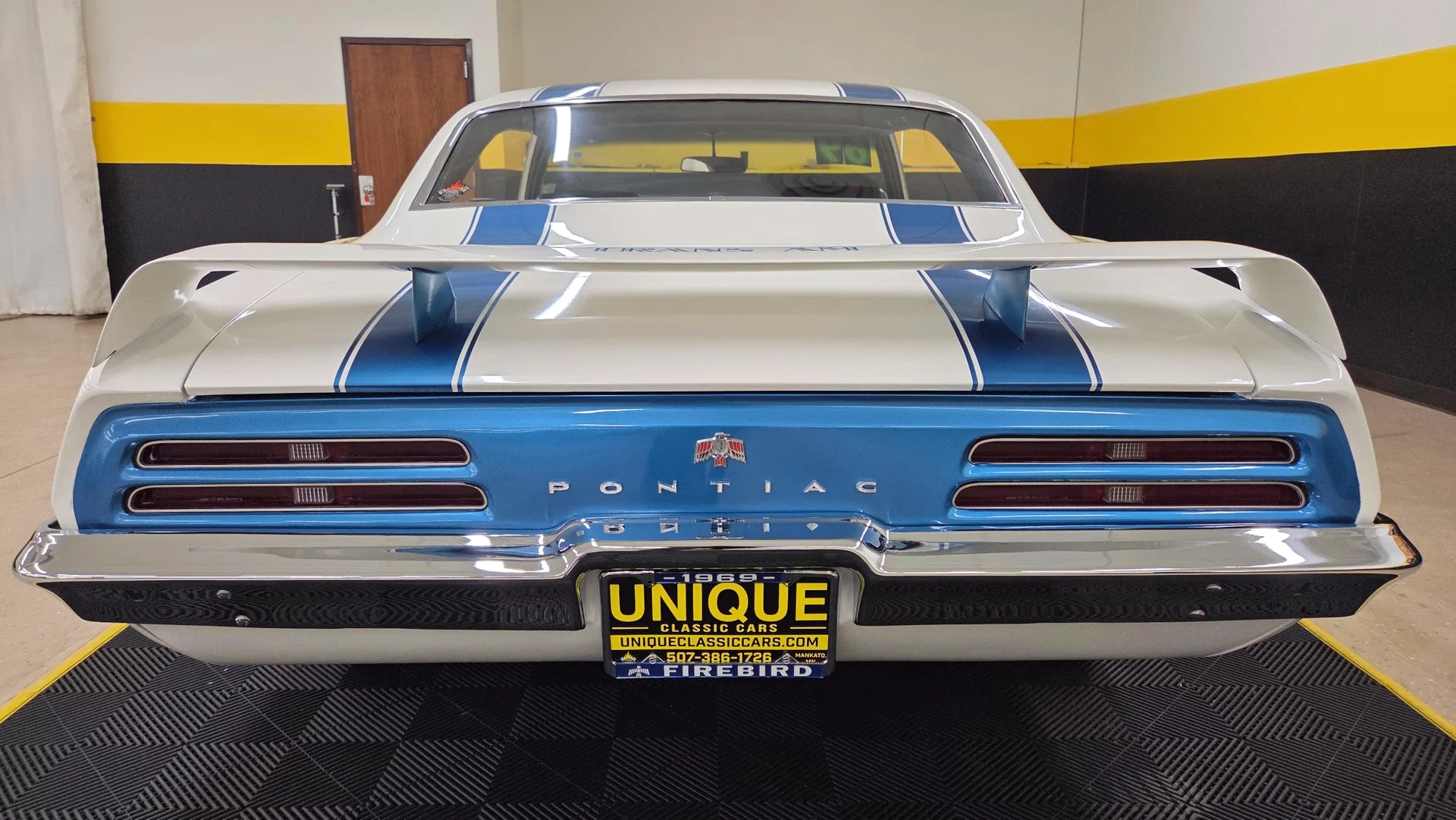
If you are looking for a late-1960s pony car that is one of the rarest ever built, with total production half of the 1969 Shelby Mustang, this is the one. While both cars are rare and cool, I still maintain these first-generation Firebirds are among the most stunning pony cars of all time.
If you are interested in this car, keep in mind it is on the clock, as the auction for this 1969 Pontiac Firebird Trans Am ends Tuesday, July 22, 2025, at 11:30 a.m. (PDT). Get out there and place a bid!
Visit the AutoHunter listing for more information and a photo gallery
The Toyota Camry is a powerhouse—not in terms of brute horsepower, but in terms of sales numbers. It’s a nameplate with high familiarity due to its long-term longevity and success: the first Camry was sold in the United States in 1983 and, chances are, sometime over the last 40-plus years since then, you have known someone who drove one (and maybe you owned one yourself). The model sold 309,876 units in 2024 alone, ranking eighth in top sales for the U.S. across every type of vehicle (not just among sedans).
But, as common as the Camry is, you might not have ever known much about the car that paved the way for it—as far back as 1964 in fact. It was called the Corona, and I found one listed that makes a perfect case study for a short history lesson.
The Pick of the Day is a 1968 Toyota Corona listed for sale on ClassicCars.com by a private seller in Sheridan, Wyoming.
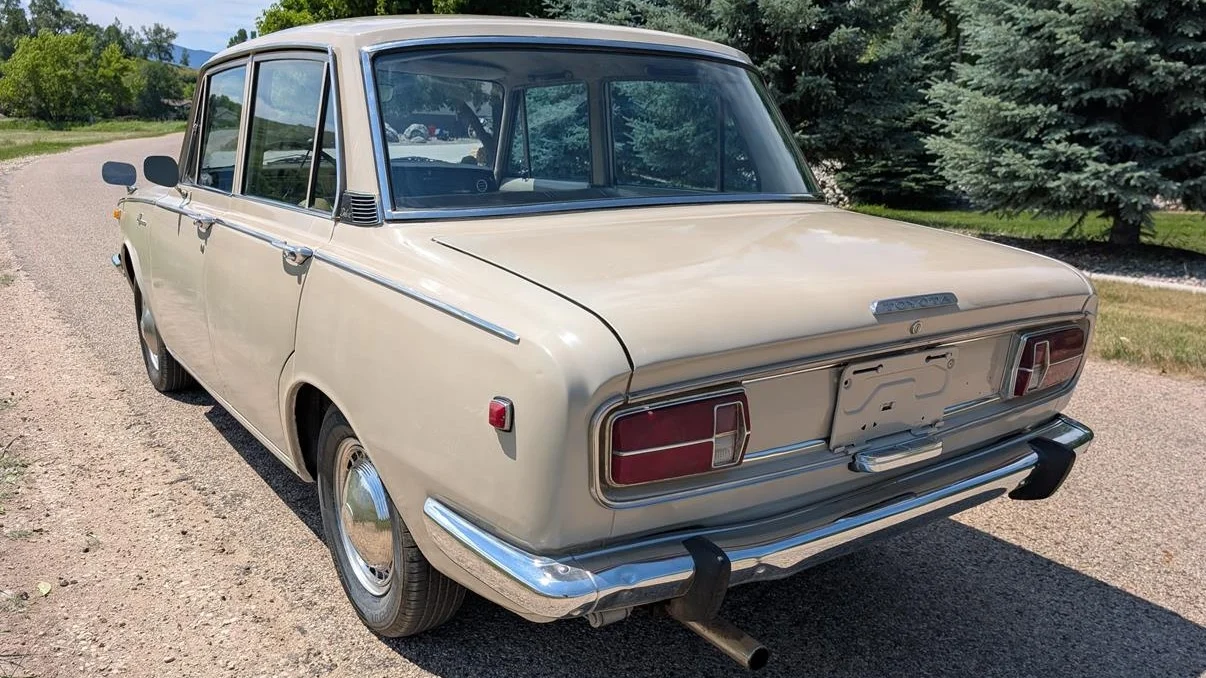
“95,000 miles—last known reading,” the listing says. “Newly painted, original Pluto Beige #1353 color applied.”
There are probably few cars as anonymous on the roads today as a beige Toyota. But this vintage one—which will hit 60 years old before we know it—stands out in a crowd. The Corona first launched as a compact rear-wheel drive car in 1957, marketed under the “Toyopet” name instead of Toyota. Sales fell short, so Toyota went back to the drawing board. A new-and-improved “RT40” series Corona entered the North American market in 1964 and received a much warmer reception. In fact, the Corona went on to be named 1969 Import Car of the Year by Road Test.
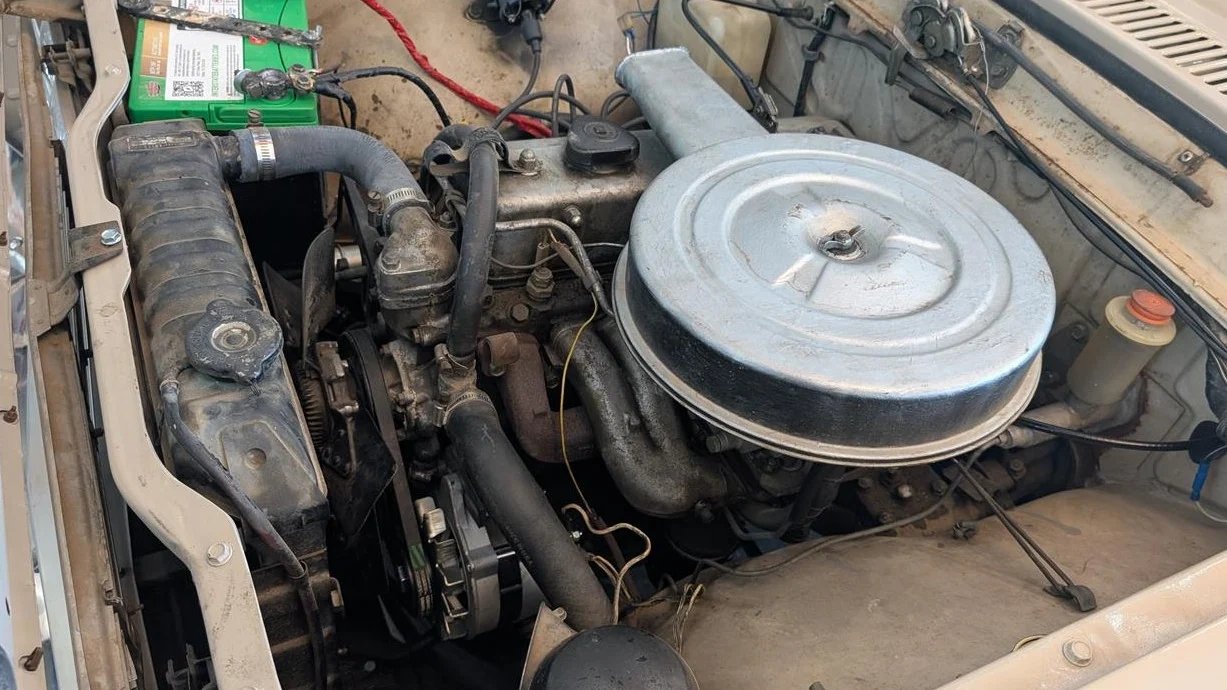
Power for this small sedan comes from a “3R” 1.9-liter inline-four mated to an automatic transmission. The seller itemizes a long list of recent service updates including replacement of the battery, alternator, fuel pump, fuel filter, carburetor, starter, spark plugs, points, fuses, thermostat, coolant hoses, oil pan gasket, air filter, engine oil, and more. The tires and shocks are new, so the chassis received some TLC in addition to the engine.
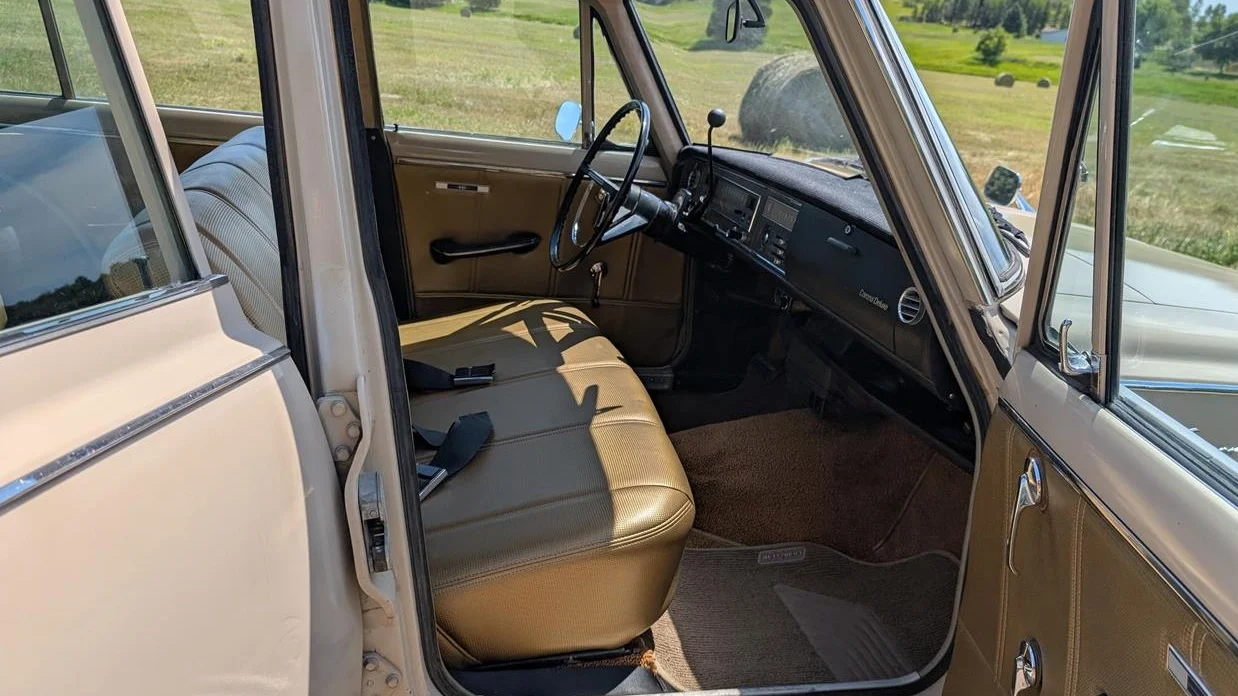
I was going to call the car “cute,” but maybe a better word is “charming.” In a time when the United States was in the midst of the muscle car wars and the Big Three were building big-block screamers, Toyota offered a little 89-horsepower four-cylinder that had 13-inch wheels, fender-mounted side-view mirrors and a “less is more” approach. As it turned out, the Corona was exactly what was needed to put Toyota on the map.
The asking price is $11,000 or best offer, and a repair manual will be included.
Click here to view this Pick of the Day on ClassicCars.com
For decades, certain cars seemed destined for obscurity—dismissed as outdated, impractical, or just plain uncool. Yet, in a remarkable twist, Millennials have breathed new life into these underdog vehicles. Thanks to shifting values, digital communities, and a love for nostalgia, models once written off are now cult favorites.
From quirky designs to misunderstood engineering, these cars have found fresh relevance among younger drivers who value individuality and story over status. This revival is more than a trend—it’s a testament to changing tastes and the powerful influence of online car culture.
Toyota’s reputation for bulletproof reliability is legendary, earning the brand unwavering trust from drivers around the globe.
Throughout the decades, Toyota engineers have meticulously designed cars to outlast the competition, often exceeding expectations by hundreds of thousands of miles.
This commitment to quality didn’t just shape Toyota’s image—it redefined what consumers expected from their vehicles.
In some cases, models became so durable that they challenged the traditional car-buying cycle, impacting resale values and even influencing Toyota’s business strategy.
It’s no wonder industry experts continually rank Toyota among the most dependable automakers worldwide, as seen in reports by J.D. Power and Consumer Reports.
These ultra-reliable Toyotas didn’t just stand the test of time—they changed the industry forever.
Volkswagen has long been synonymous with ingenious engineering and forward-thinking design.
From the earliest Beetle to modern marvels, VW has consistently infused its vehicles with clever features and advanced technology, often decades ahead of mainstream trends.
Yet, many of these innovations went unnoticed by everyday buyers, overshadowed by style or price.
Whether it was pioneering safety systems, creative use of space, or groundbreaking fuel efficiency, Volkswagen’s commitment to smart solutions set it apart from the competition.
As Volkswagen’s innovation legacy demonstrates, these vehicles were often far more sophisticated than buyers realized at first glance.
When it comes to cars, wealthy individuals are often associated with the world’s most extravagant supercars and rare collectibles.
But behind the scenes, even billionaires sometimes defy expectation—opting for vehicles that reflect personal stories, nostalgia, or sheer eccentricity rather than just a jaw-dropping price tag.
From humble hatchbacks to quirky classics, these choices reveal a surprising side to the world’s richest.
Get ready to discover the unexpected favorites that have found a place on billionaire bucket lists—cars that tell a story, spark a memory, or simply make life more fun.
For decades, people have turned to Mopar for upgrades that’ll make their Dodge Challenger go faster, Jeep Wrangler climb higher, or Ram 1500 more useful. But many go to outside companies for their exterior, interior, performance, and storage needs. Mopar is aware of this, which is why it has launched the Affiliated Accessories line of aftermarket parts and accessories.
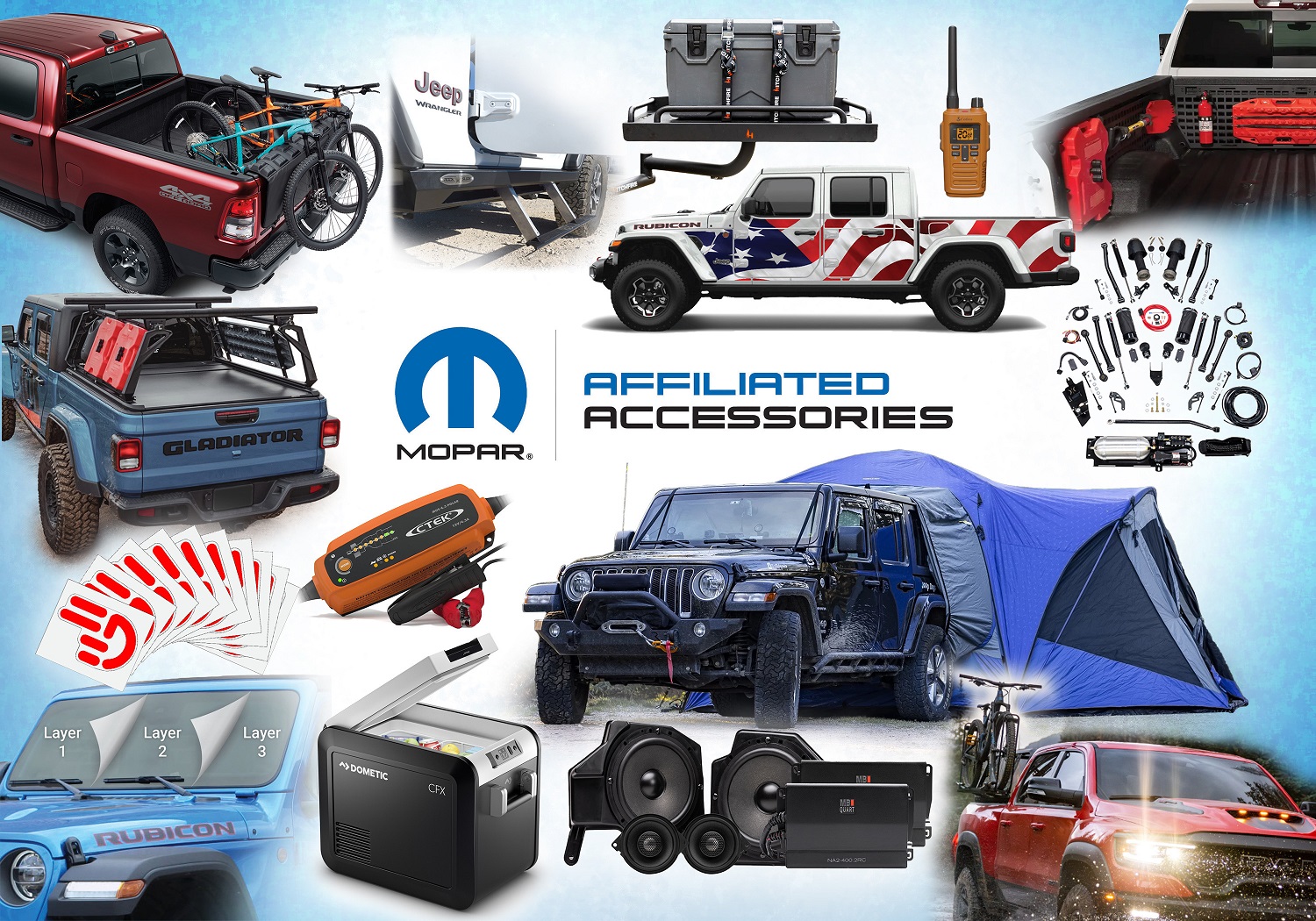
According to Stellantis, “The new Mopar Affiliated Accessories program offers more than 1,000 popular accessories from well-known and preferred aftermarket supplier partners” for Chrysler, Dodge, Jeep, and Ram dealerships in the U.S. Those include everything from lighting and audio/video to exterior graphics and lift kits, all of which are guaranteed by their respective manufacturers and reviewed by Mopar to make sure they fit properly. They can be ordered either through the Mopar eStore or at a dealership; once they arrive at the dealer, they can be installed there or picked up by the customer.
The current list of Affiliated Accessories suppliers includes:
Below are some of the more interesting Affiliated Accessories:
- 75-liter Dometic CFX3 75 Powered Cooler with two adjustable temperature zones: $1,345
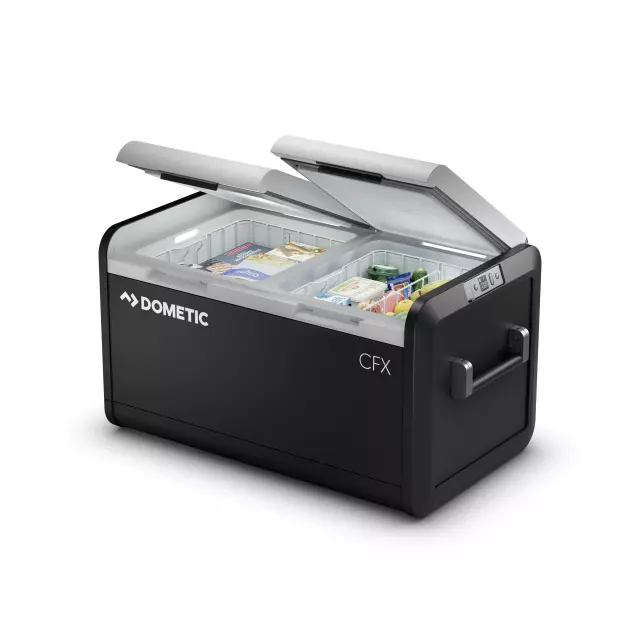
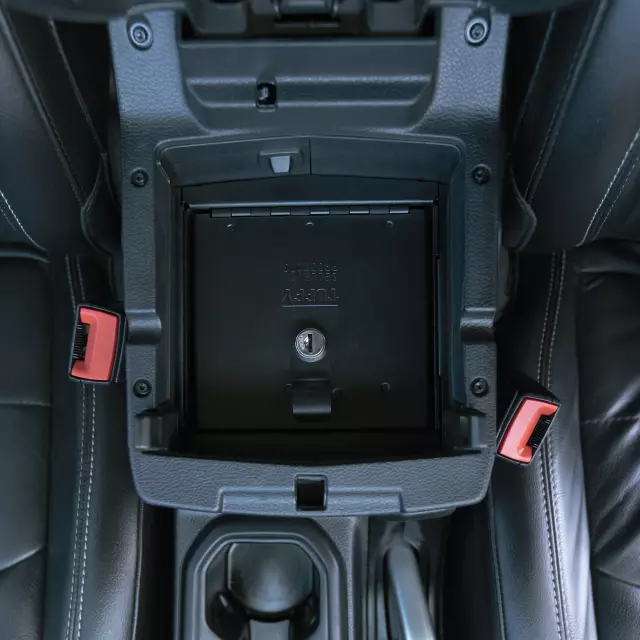
- Jeep Wrangler Unlimited 3.5-inch Dynamic Lift Kit by AccuAir: $7,405
- ClearLidz Original Interchangeable Panoramic Top for the 2020-2024 Jeep Gladiator: $1,494
- Cascadia 4×4 VSS 30 Watt Solar System for the Jeep Wrangler and Gladiator: $441.99
I recently came across a photo of my grandma’s 1990 Chevrolet Beretta (see photo above, with my mom posing by it) and it prompted me to poll a few of my friends about what vehicles their grandmothers drove. I have vivid memories of getting picked up at Hillcrest Elementary in Logan, Utah, in grandma’s black-on-black Chevy. Her license plate frame said, “My Grandkids Are Cuter Than Yours.” I’ve already shared a little of my “family car history” when discussing my grandpa’s Buick Special and my dad’s Chevy Nova.
Now, it’s Grandma’s turn.
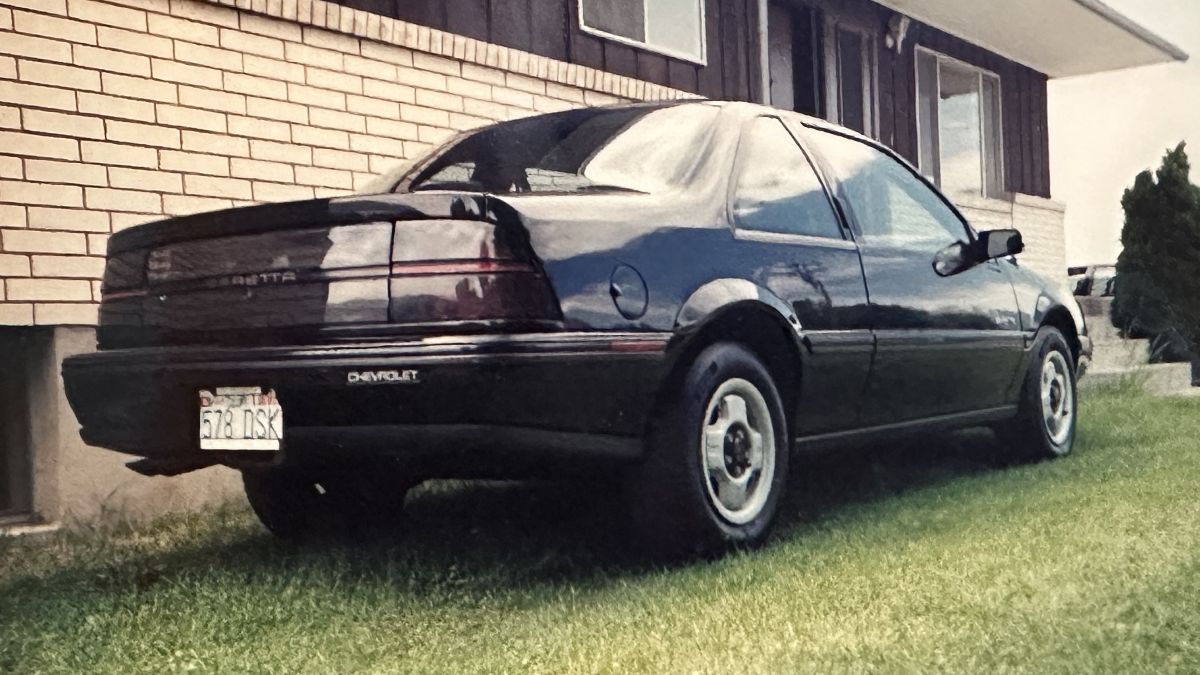
Beretta Backstory
The Beretta coupe was sold from 1987 to 1996, sharing the General Motors L-body platform with its four-door counterpart, the Chevrolet Corsica. A wide variety of engines (six, in fact) were offered throughout the car’s 10-year production run. On paper, the sportiest Beretta was the 1990-93 “GTZ,” which employed the 2.3-liter Quad 4 engine rated at 180 horsepower and came standard with a Getrag five-speed manual transmission.
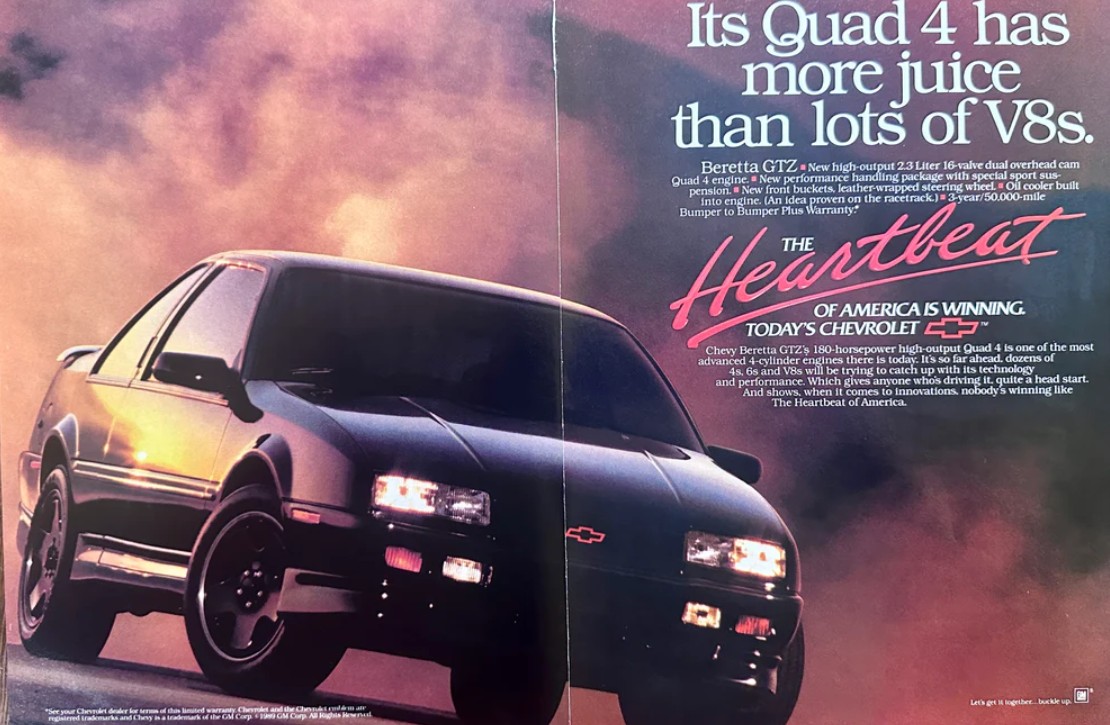
The Beretta’s appearance was penned by none other than Jerry Palmer, the same designer responsible for the iconic C4 Corvette. The Beretta employed an aerodynamic shape for its time—especially considering the fact that most 1980s cars were boxy (see: Chevrolet Celebrity). One of its noteworthy exterior features was its vertical door handle design, later used on other cars like the Oldsmobile Cutlass Supreme and the Pontiac Grand Prix.
Noteworthy Trivia
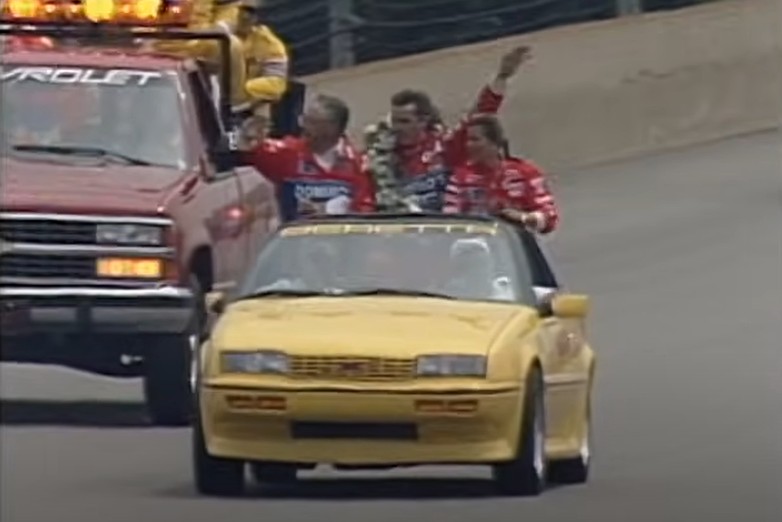
The car’s name was the subject of a trademark dispute that ended up being settled out of court in 1989. Italian firearms manufacturing company Beretta (or more formally, “Fabbrica d’Armi Pietro Beretta”) took issue—understandably—with General Motors’ use of the name. The matter was eventually resolved when GM donated $500,000 to a Beretta-sponsored charity. Chevrolet also gave a car to Beretta. I wonder where that unit ended up?
As its top claim to fame, a Beretta was featured as the official pace car of the 74th Indianapolis 500 on May 27, 1990. I was able to find a full race broadcast of the Indy 500. The car driven by General Manager Jim Perkins was in fact a customized convertible, although it did retain the use of a B-pillar.
Get In the Game!

Much like with any other automotive make and model, there is a community of Beretta enthusiasts out there. Members even get together for an annual even called Berettafest, similar to what I’ve done with my Acura Legend and Acura NSX families.
Berettafest 2025, coincidentally, just concluded. The event was held in Watkins Glen, New York, from June 25-29. If you didn’t make it, there’s always next year! Speaking of, there’s a 49-mile (!) yellow Beretta Indy for sale on ClassicCars.com. (Click here to view the listing). You’d be the talk of the event if you showed up in that time capsule next year.
Your Turn
I’d love to hear it from our audience: What did (or does) your grandma drive?
My Classic Car 2025
Please fill out the information requested below! Give us YOUR story of your car, and please include photos.
My Classic Car Submission Form
How Can We Reach You?
What do you want to share about this vehicle?
Max. file size: 50 MB.
Right now on AutoHunter, you can find this 1986 Nissan 300ZX, a modern classic Japanese car powered by a 3.0-liter V6 connected to a five-speed manual gearbox. Finished in Hot Red and equipped with T-tops over a black and white fabric interior, this Z31 300ZX comes from the dealer in Massachusetts with an owner’s manual, service records, clean CARFAX report, and clear title.
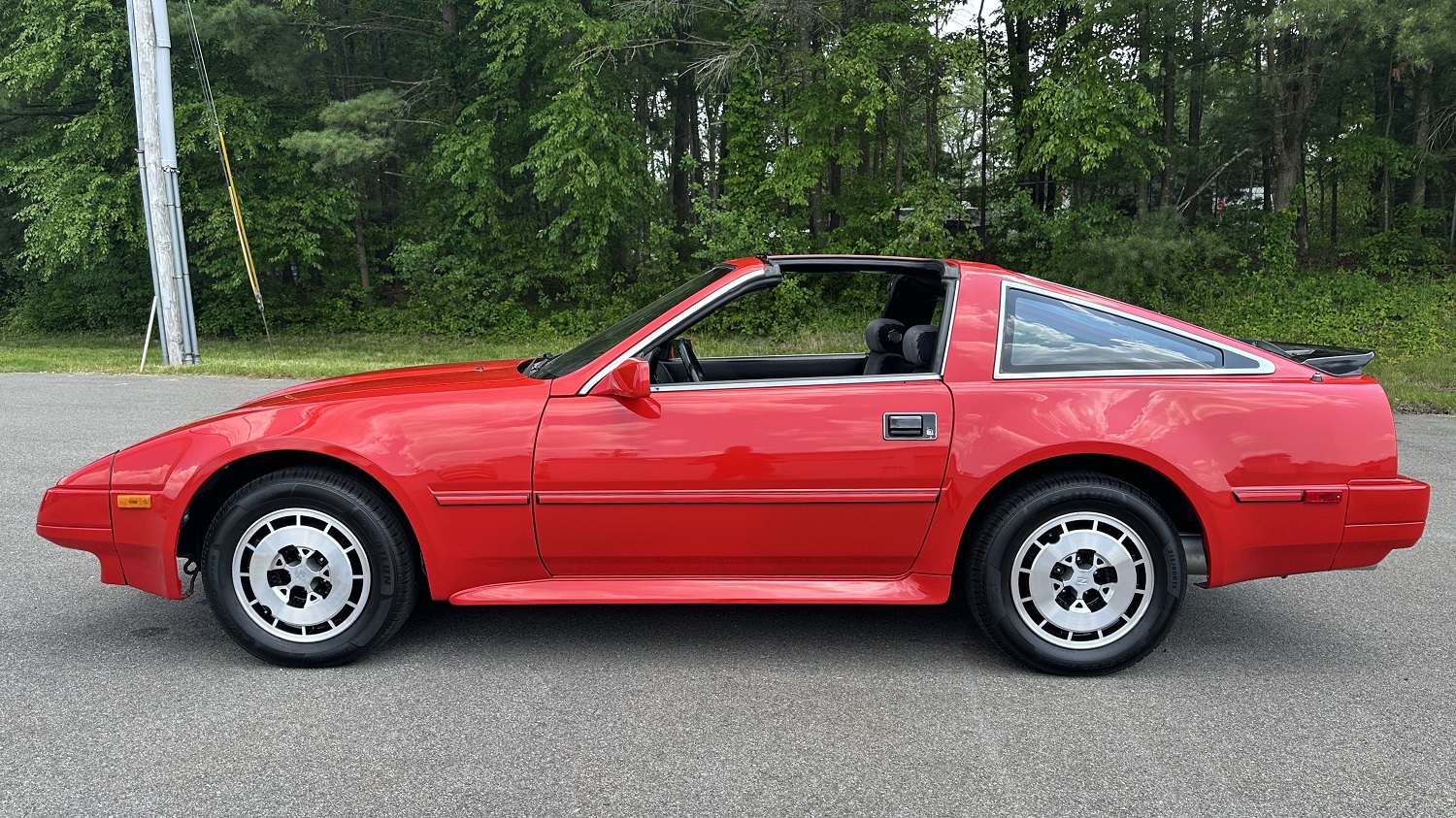
The angular Hot Red exterior features a repainted front fascia, pop-up headlights, body-color side moldings and mirror caps, tinted glass T-top panels, lift-up rear hatch with a wiper, black rear spoiler, and single exhaust outlet with dual tips.
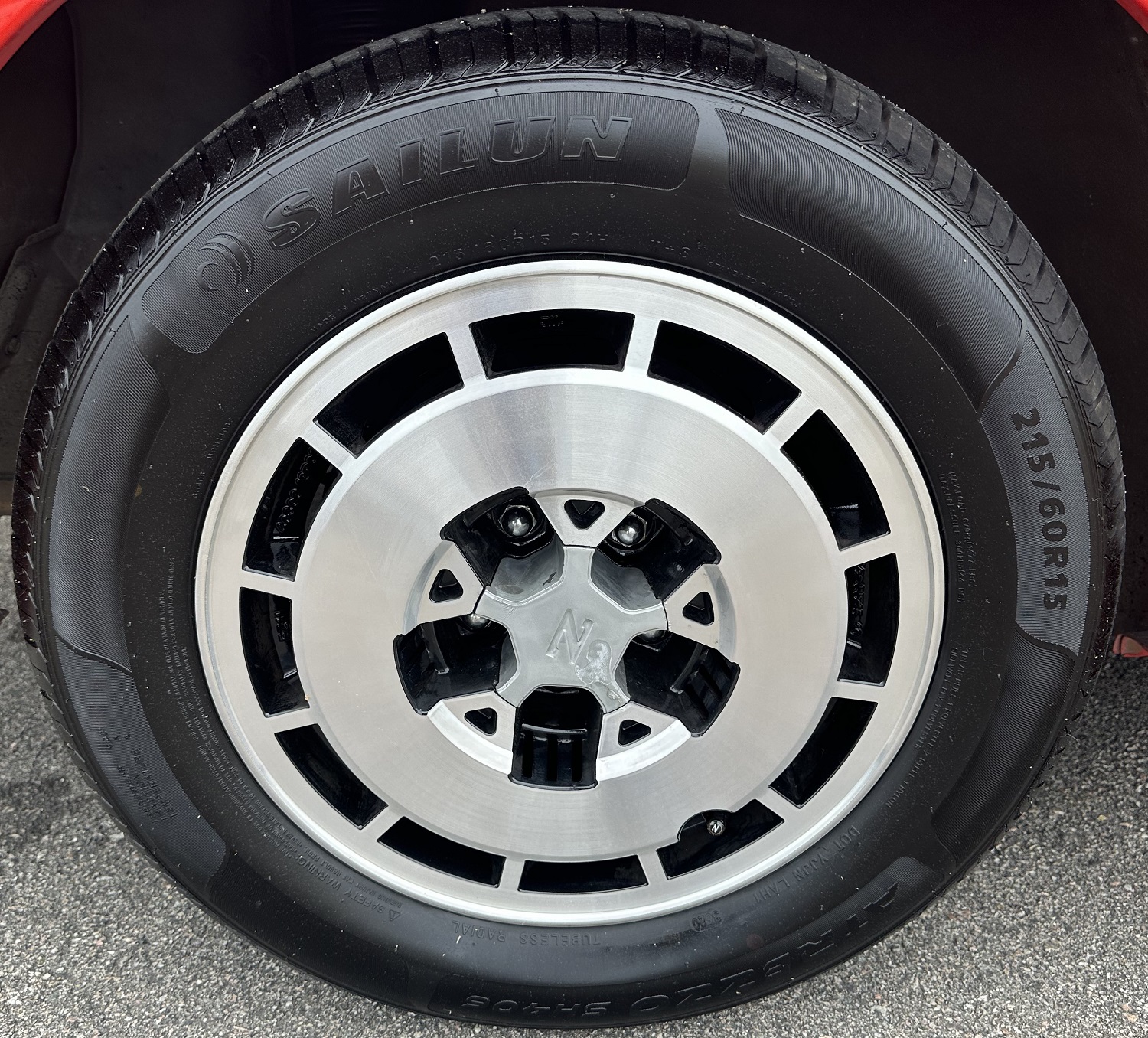
A set of 15-inch factory wheels with 215/60 Sailun Atrezzo tires carry this Z down straightaways and through curves.
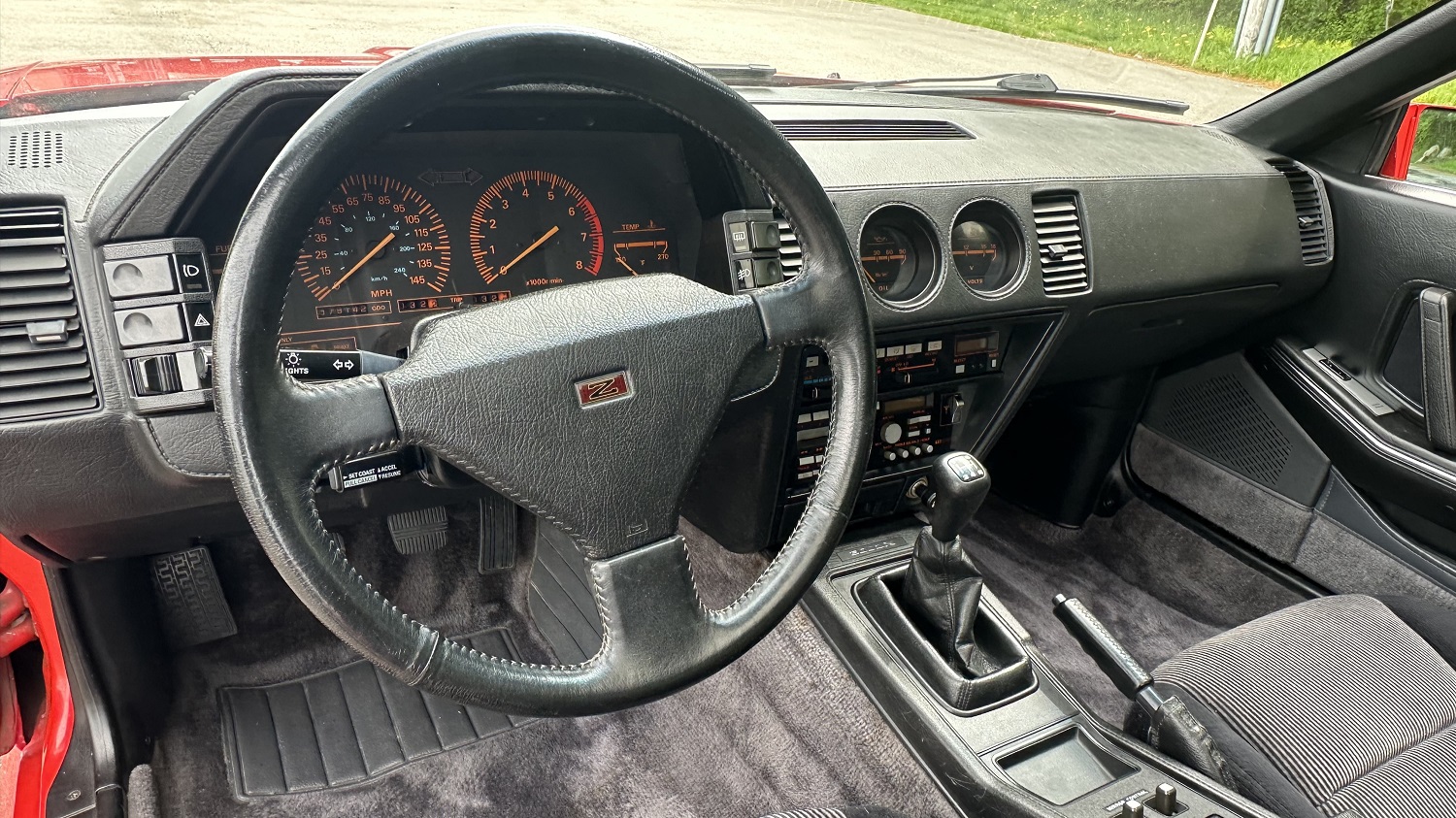
The two-seat cockpit is furnished with black fabric bucket seats with black and white striped cloth inserts. Interior features include power windows, locks, and mirrors; cruise control; power steering; power driver’s seat; AM/FM/cassette radio (which the dealer says only produces static); and center console.
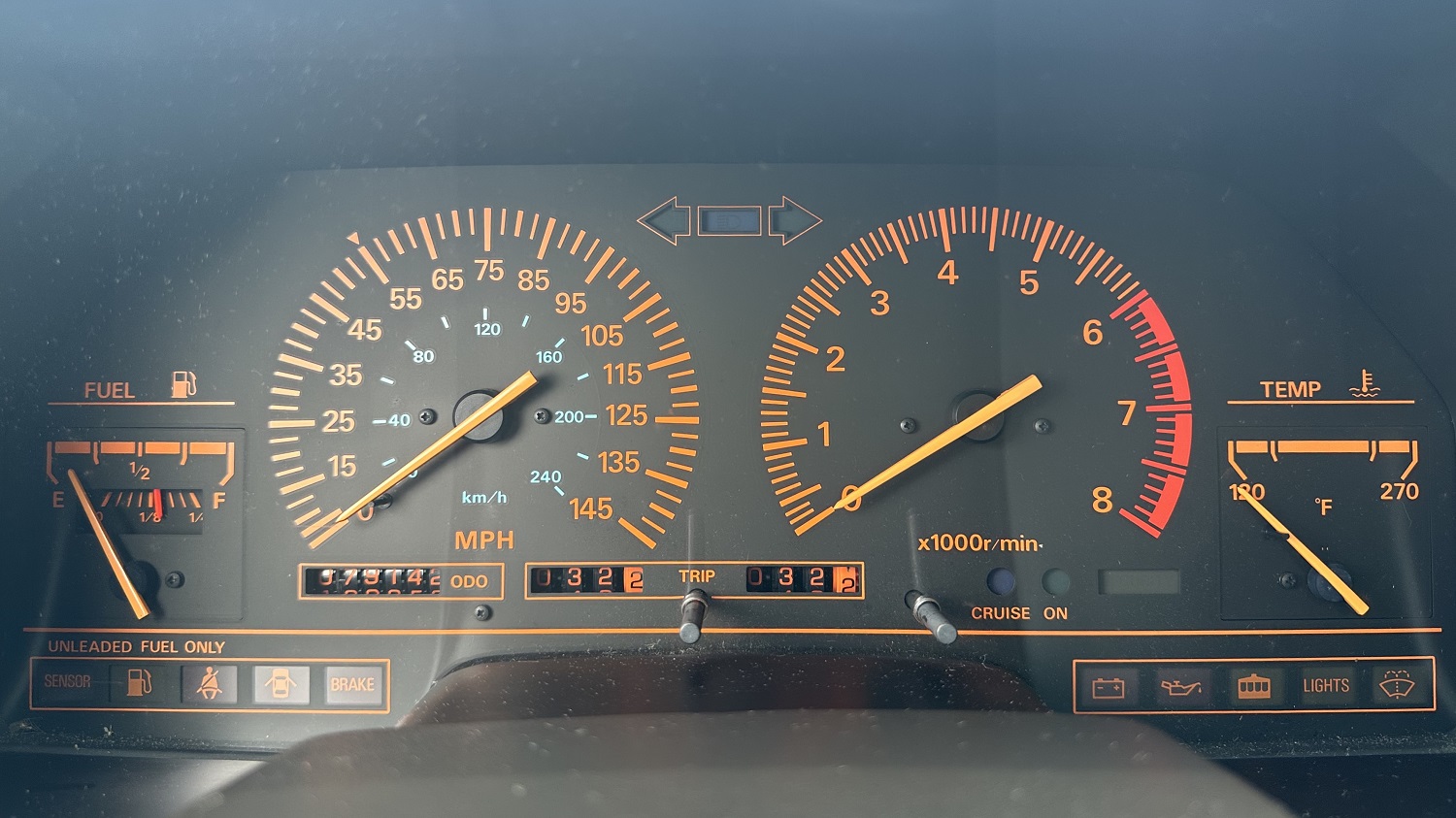
Instrumentation consists of a 145-mph speedometer, an 8,000-rpm tachometer, and gauges for the fuel level, temperature, oil pressure, and voltage. The odometer shows 79,142 miles, a slight increase from the CARFAX report’s latest mileage figure of 74,962 miles from July 2023.
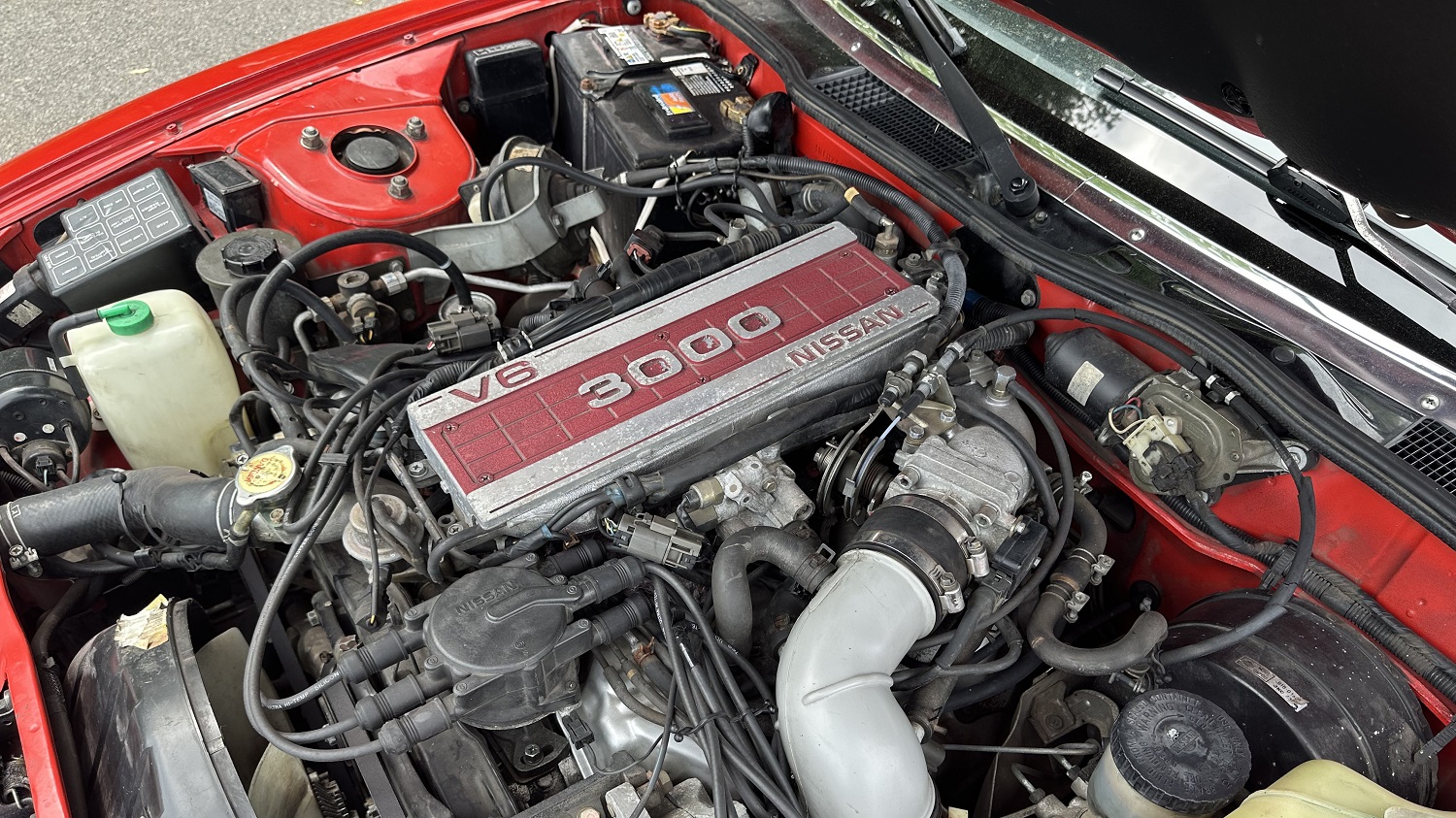
As its name implies, the 300ZX has a 3.0-liter V6, which delivers its fuel-injected power to the road through a five-speed manual transmission and the rear wheels. A fully independent suspension and power brakes help make sure this car lives on.
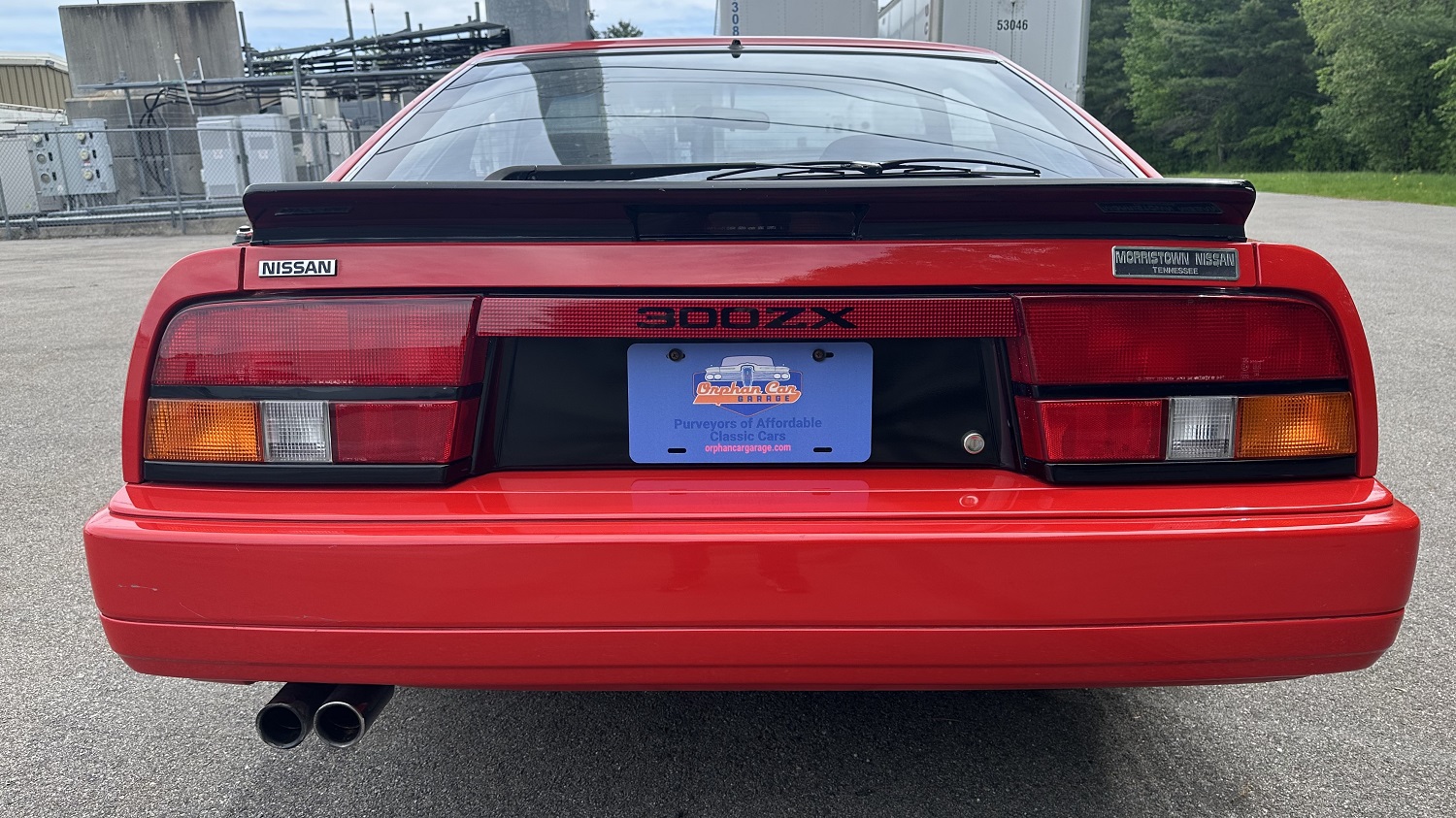
If you want this preserved piece of Nissan Z car history, bid on it now. The auction for this 1986 Nissan 300ZX ends on Wednesday, July 23, 2025, at 11:00 a.m. (PDT).
Visit the AutoHunter listing for more information and a photo gallery
